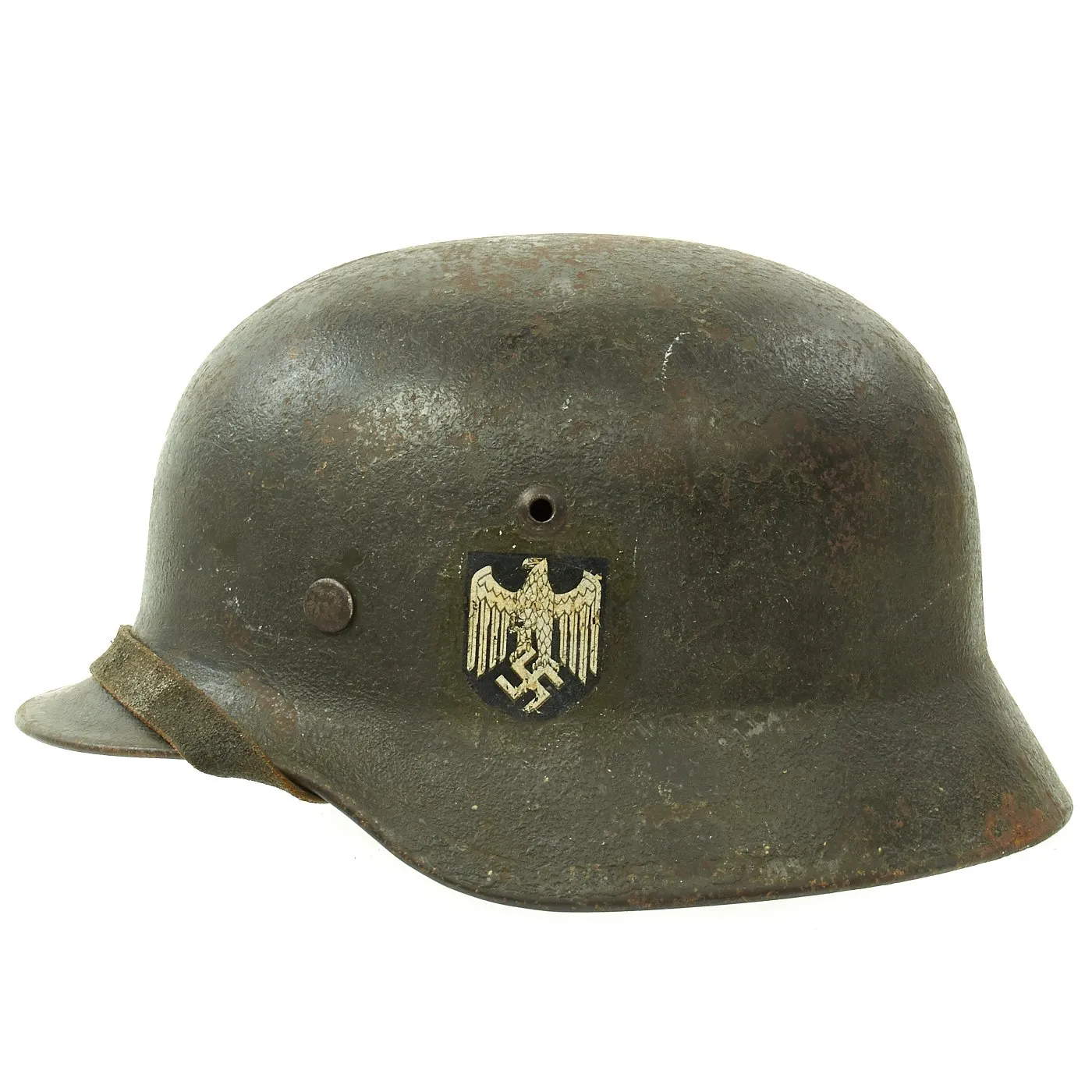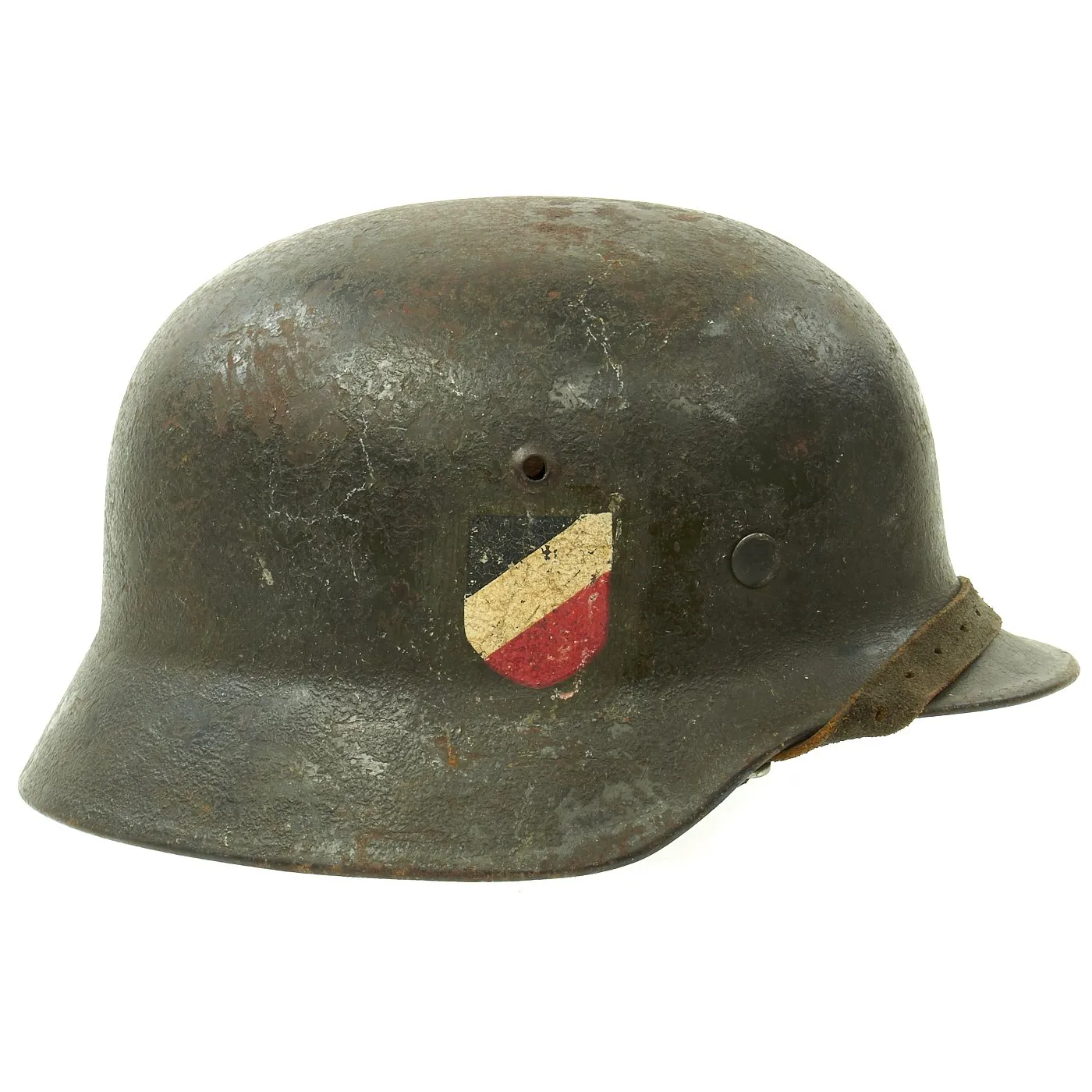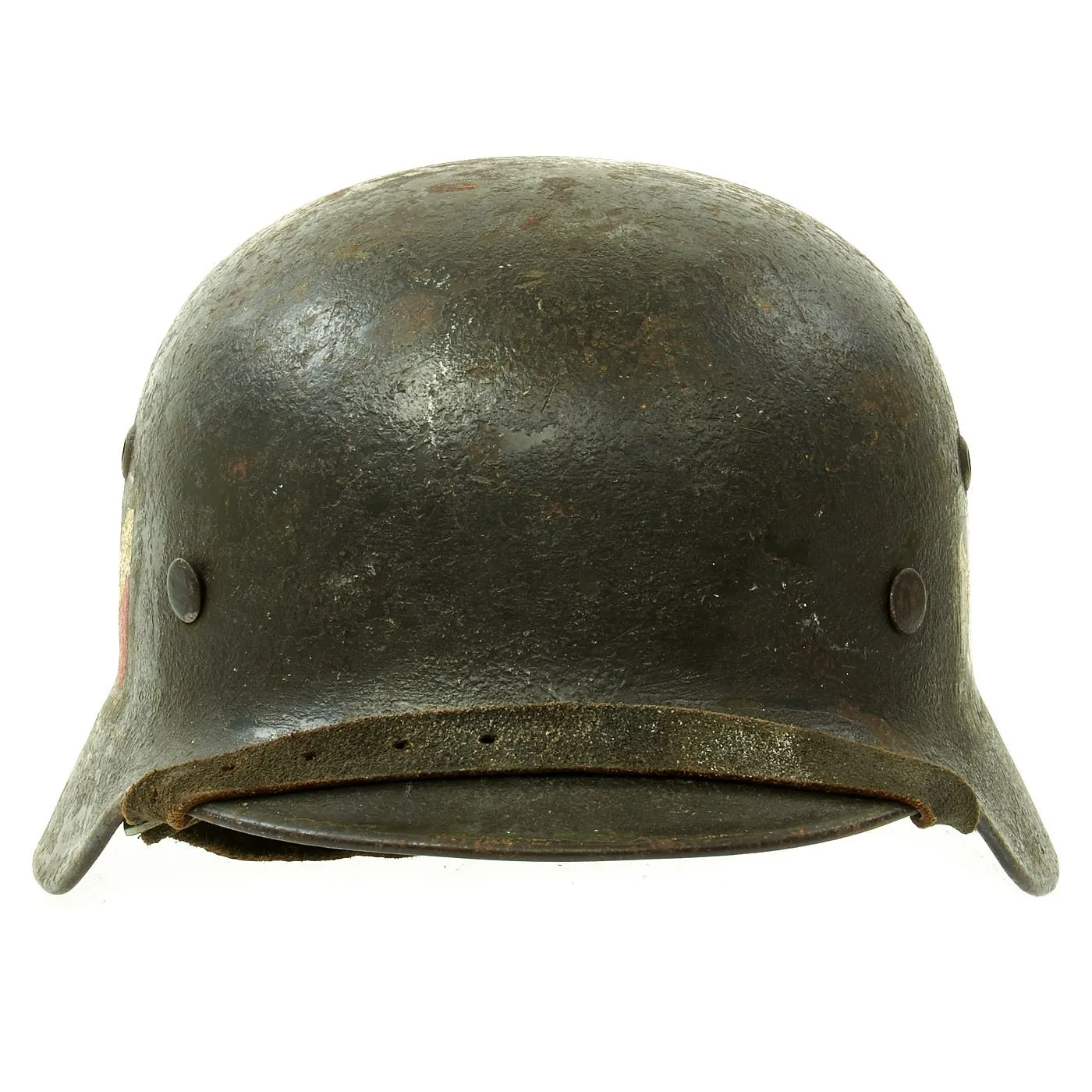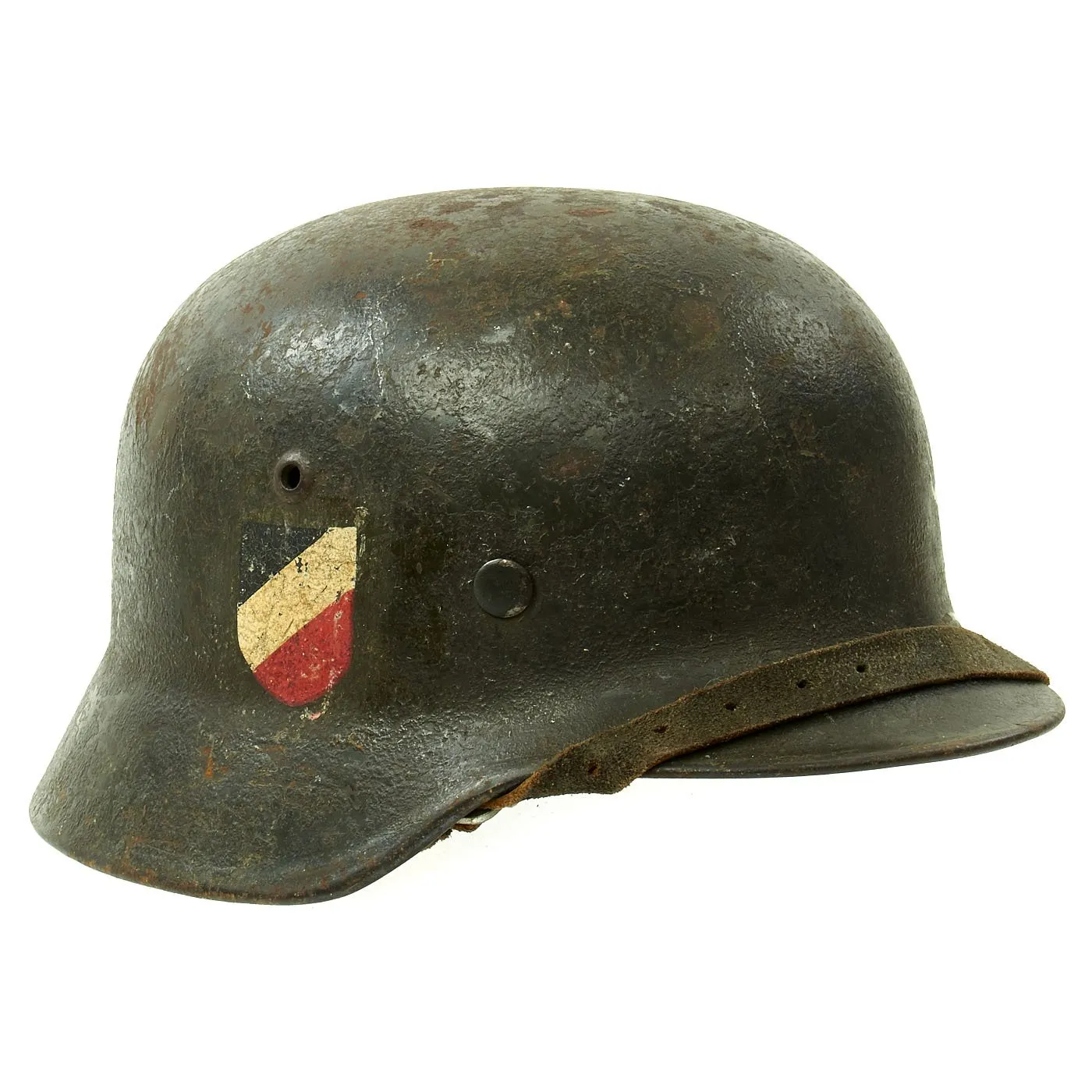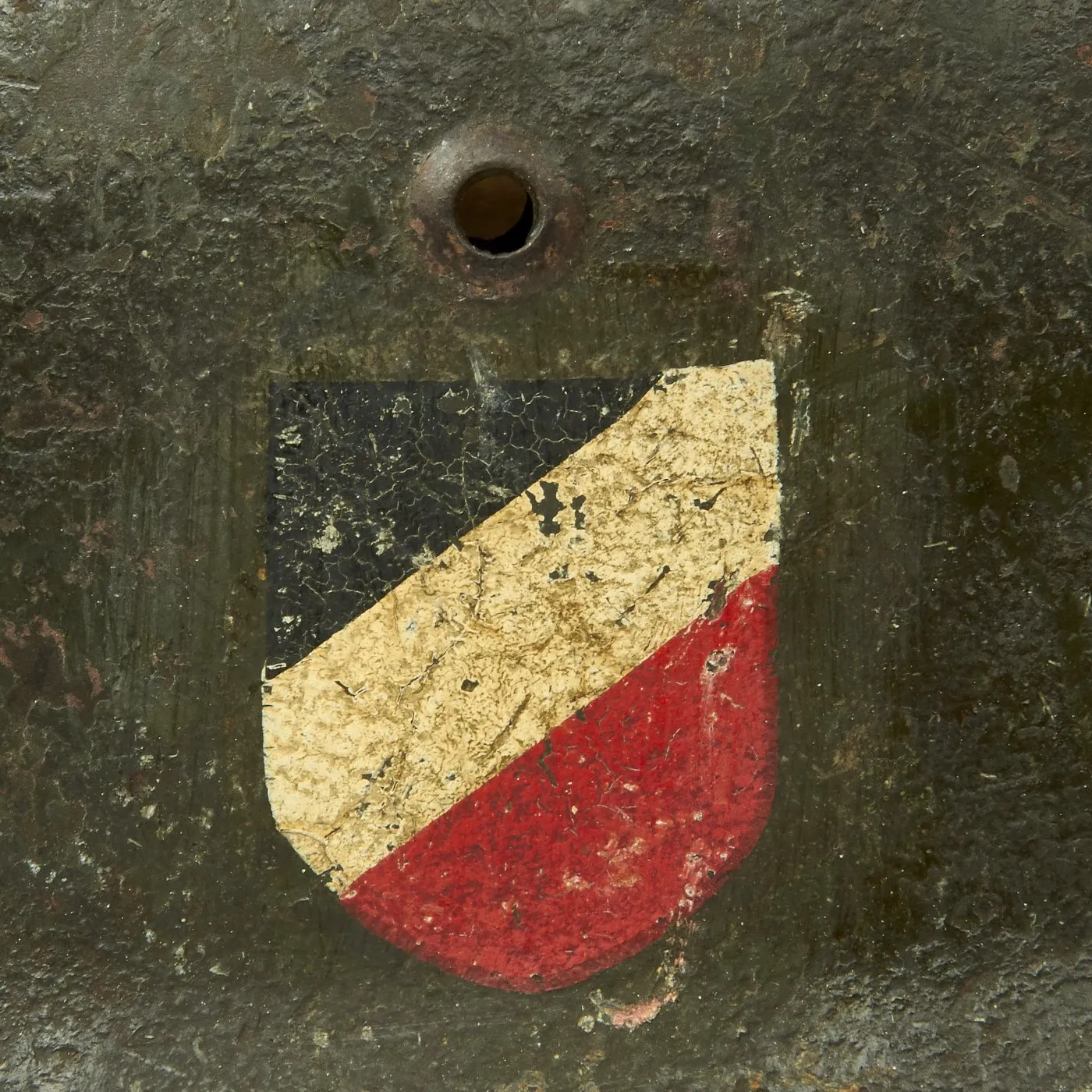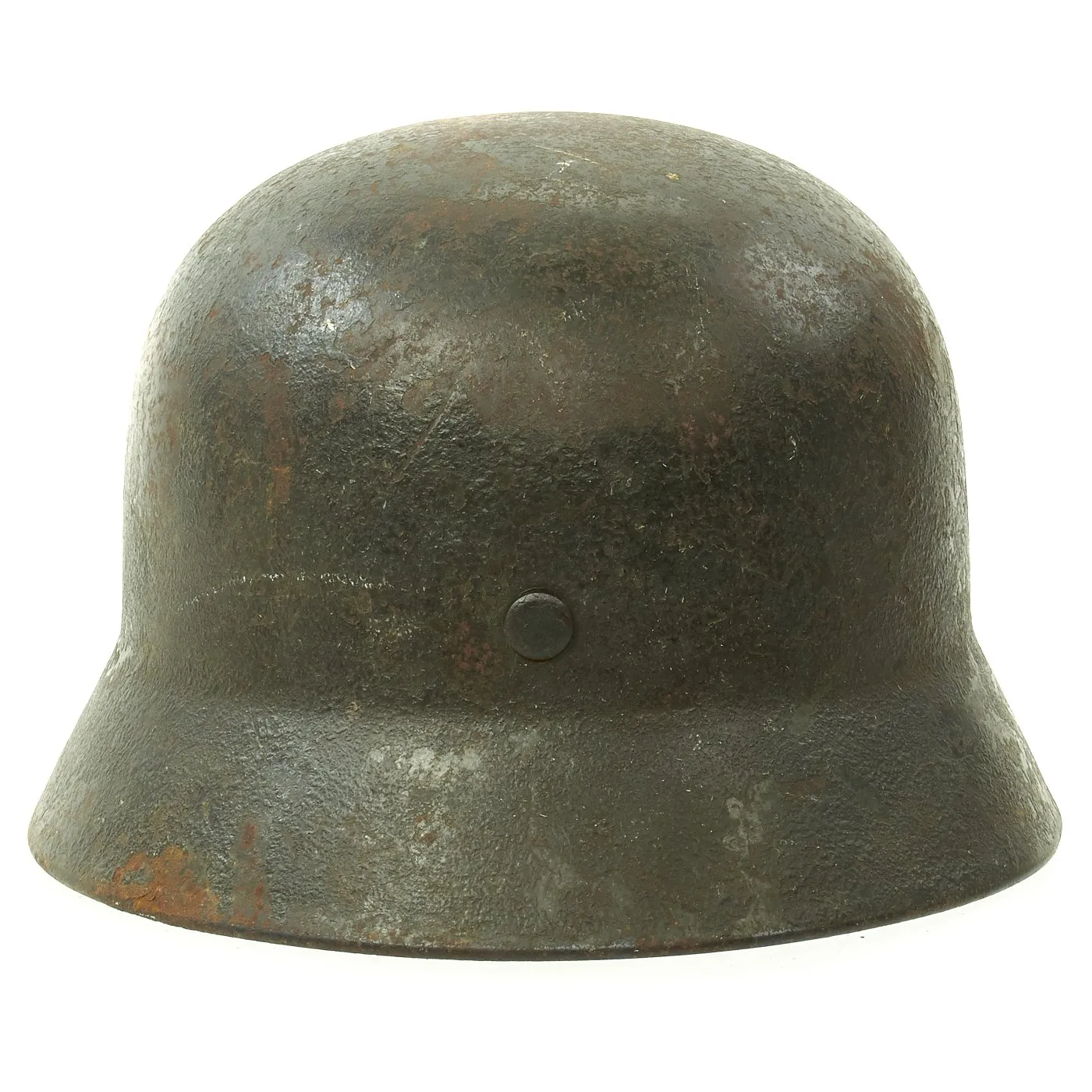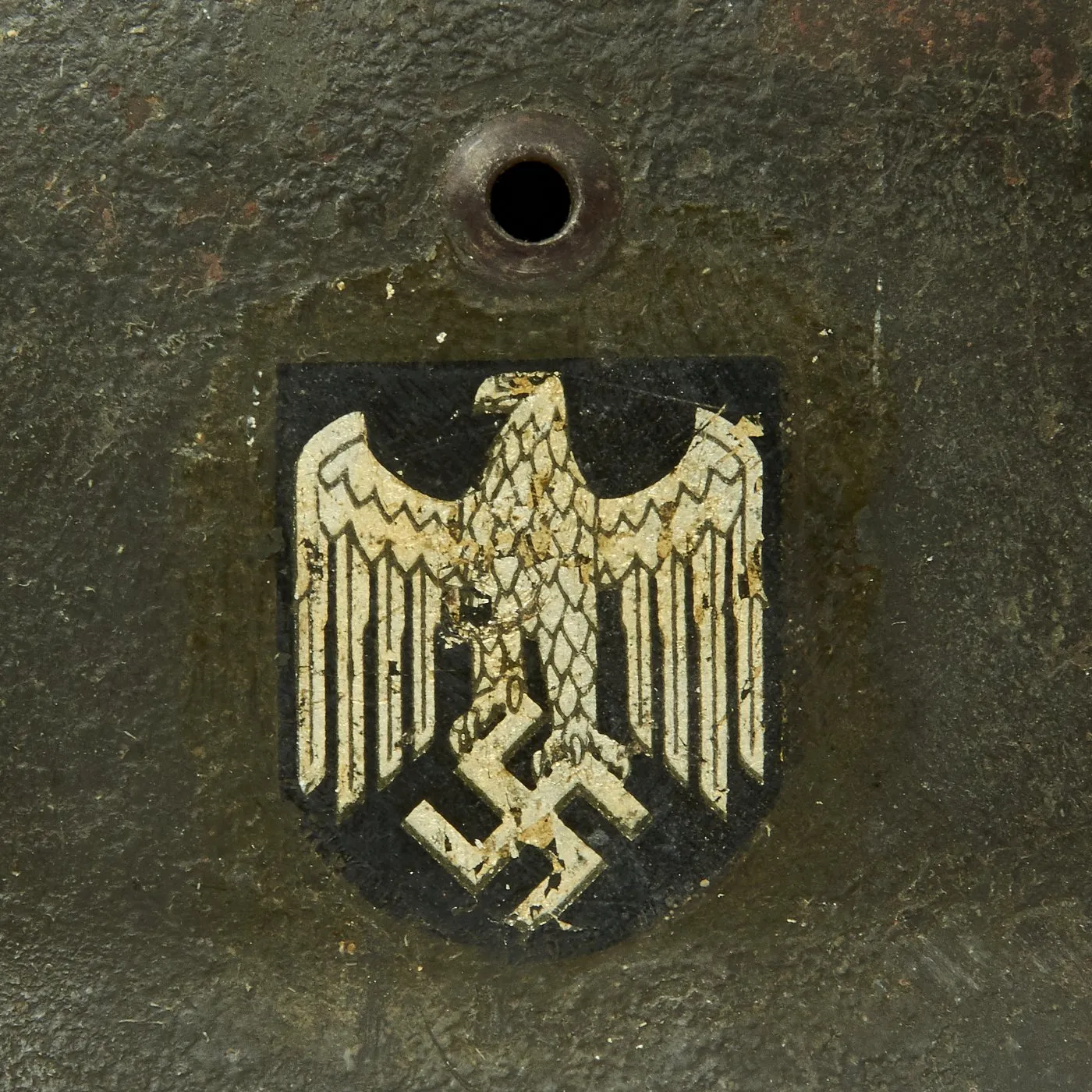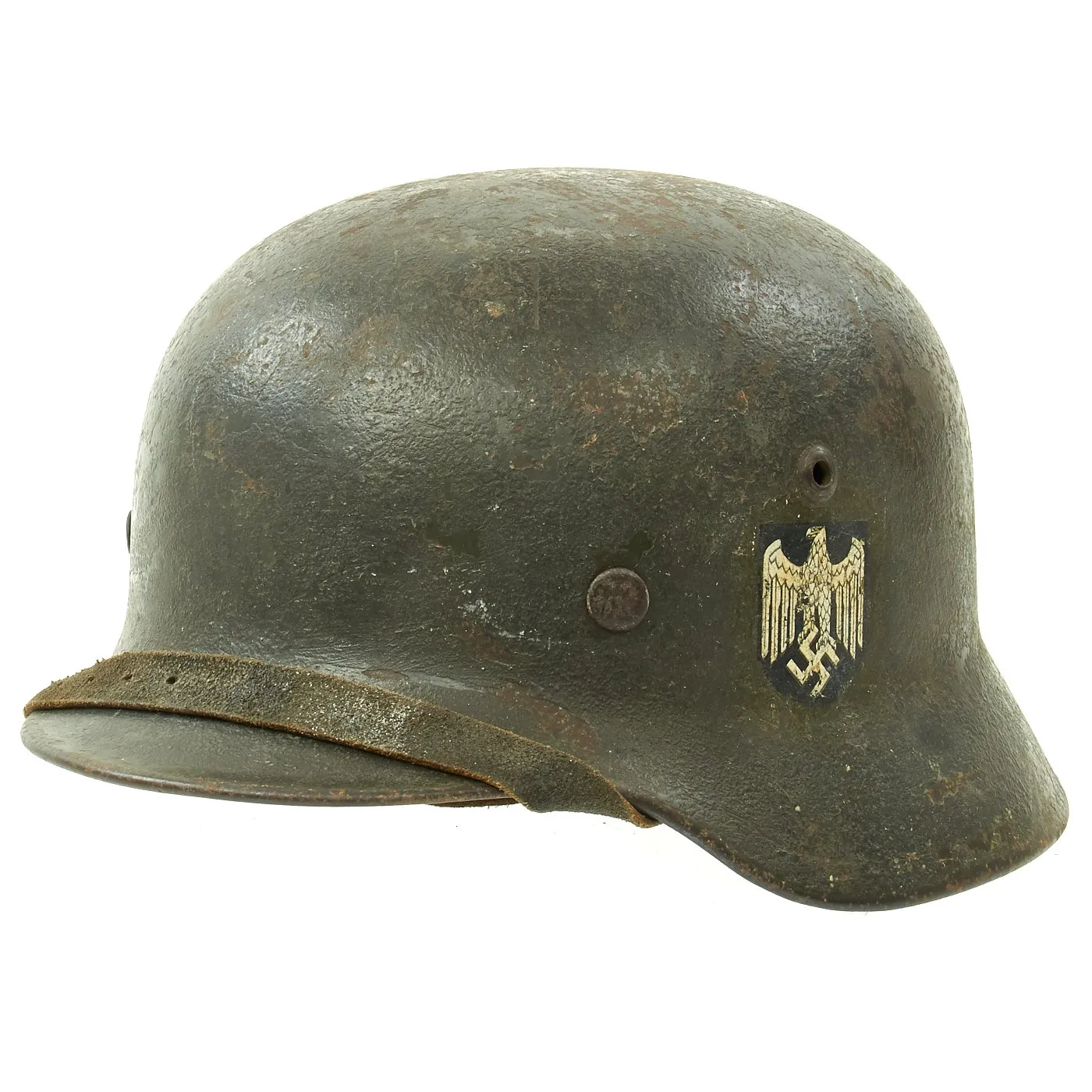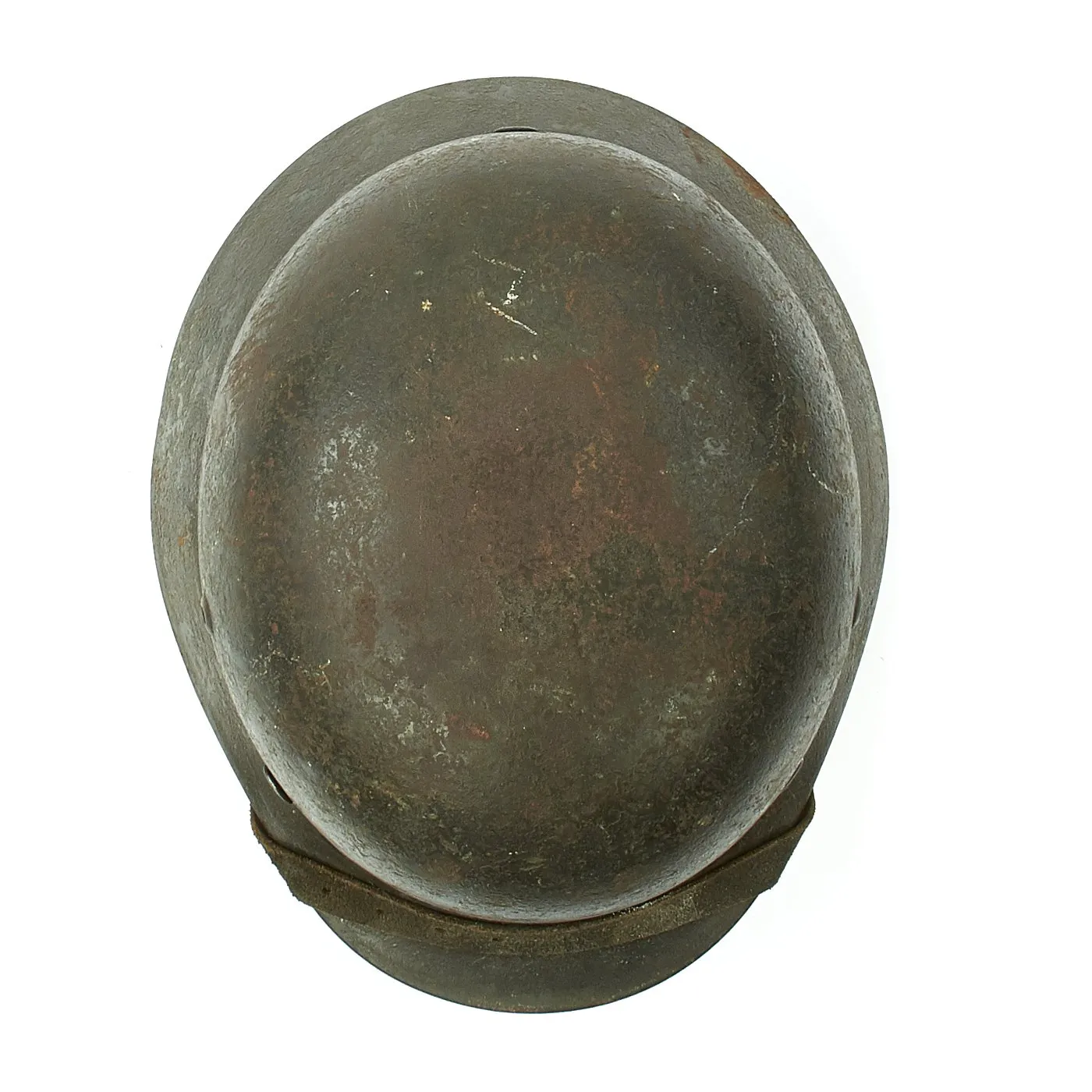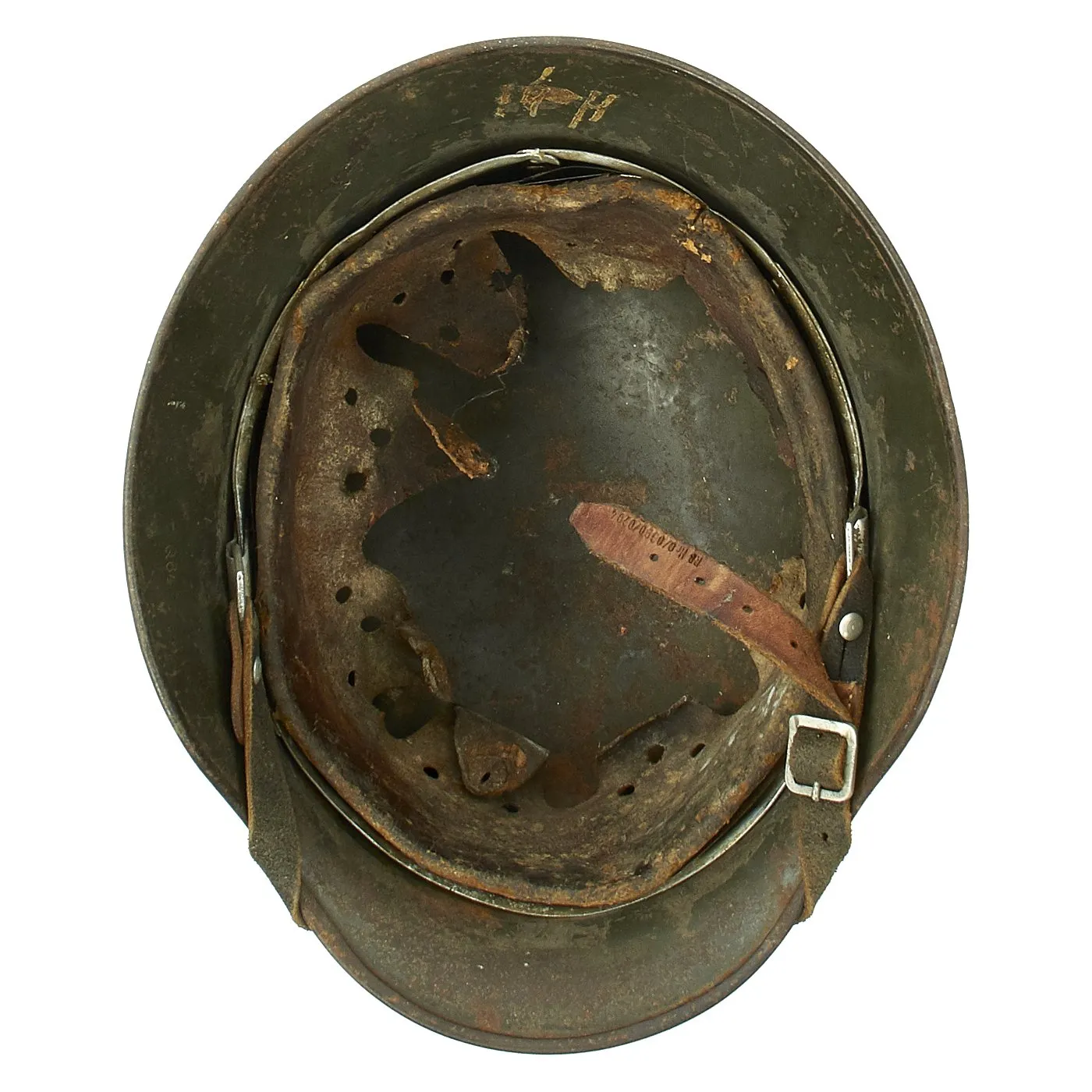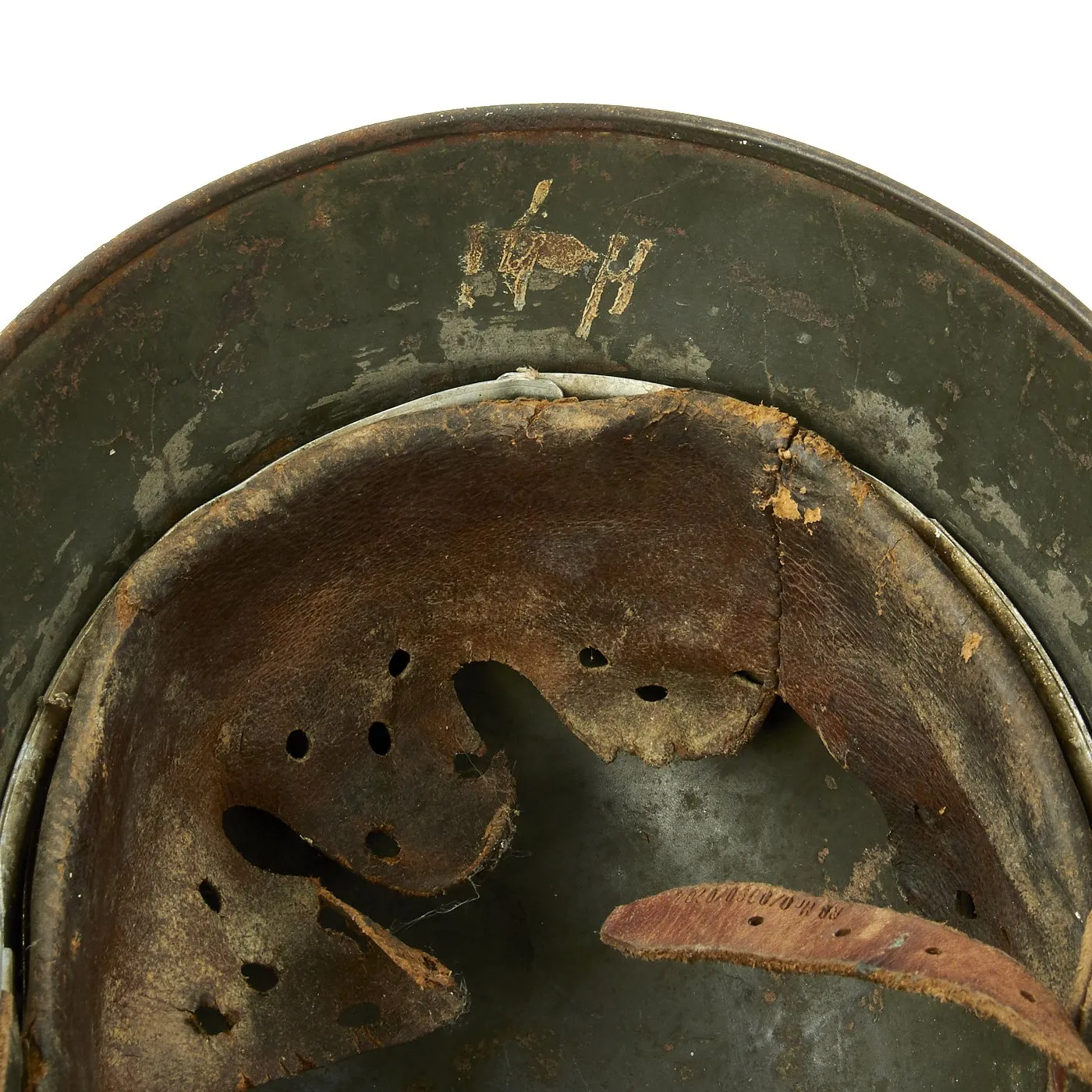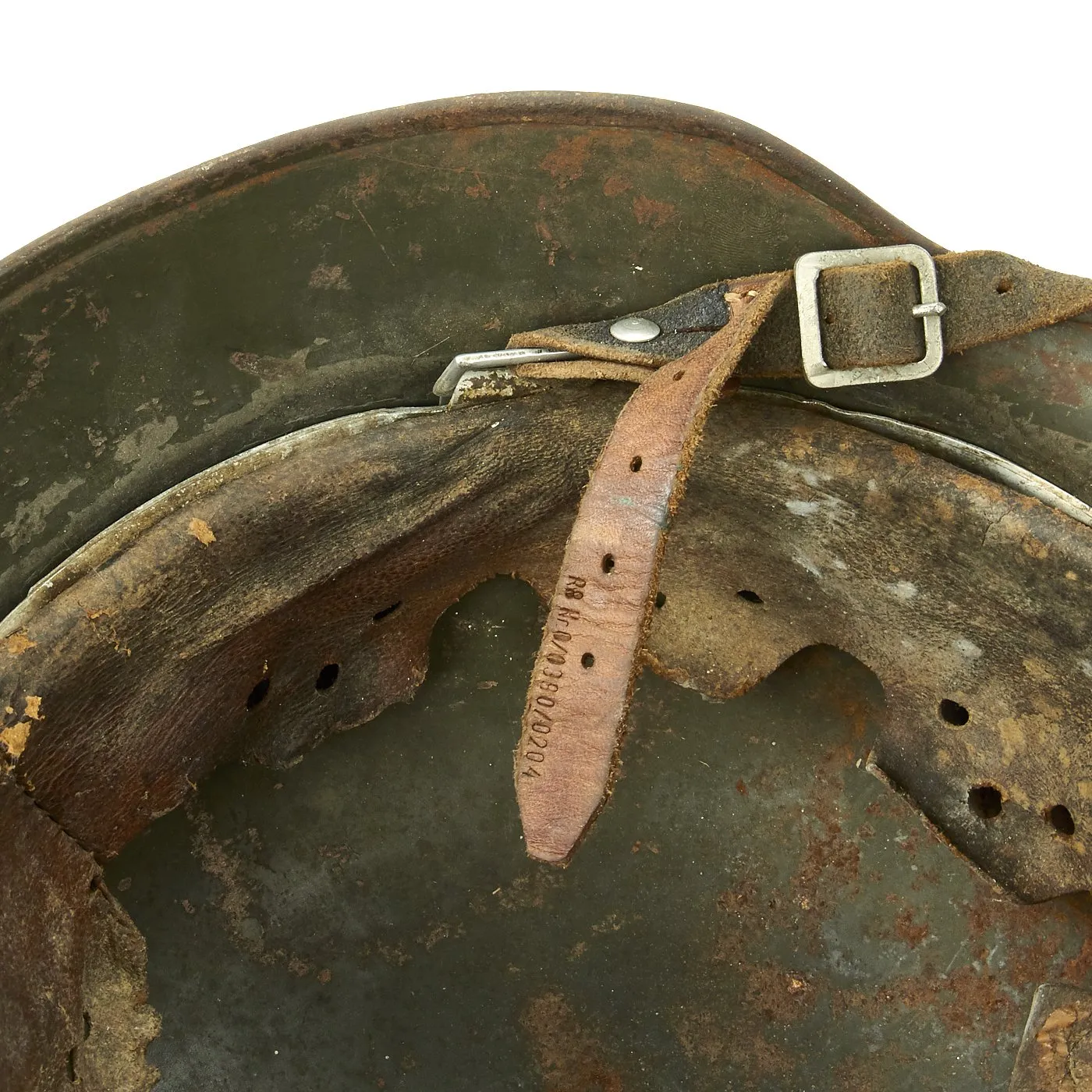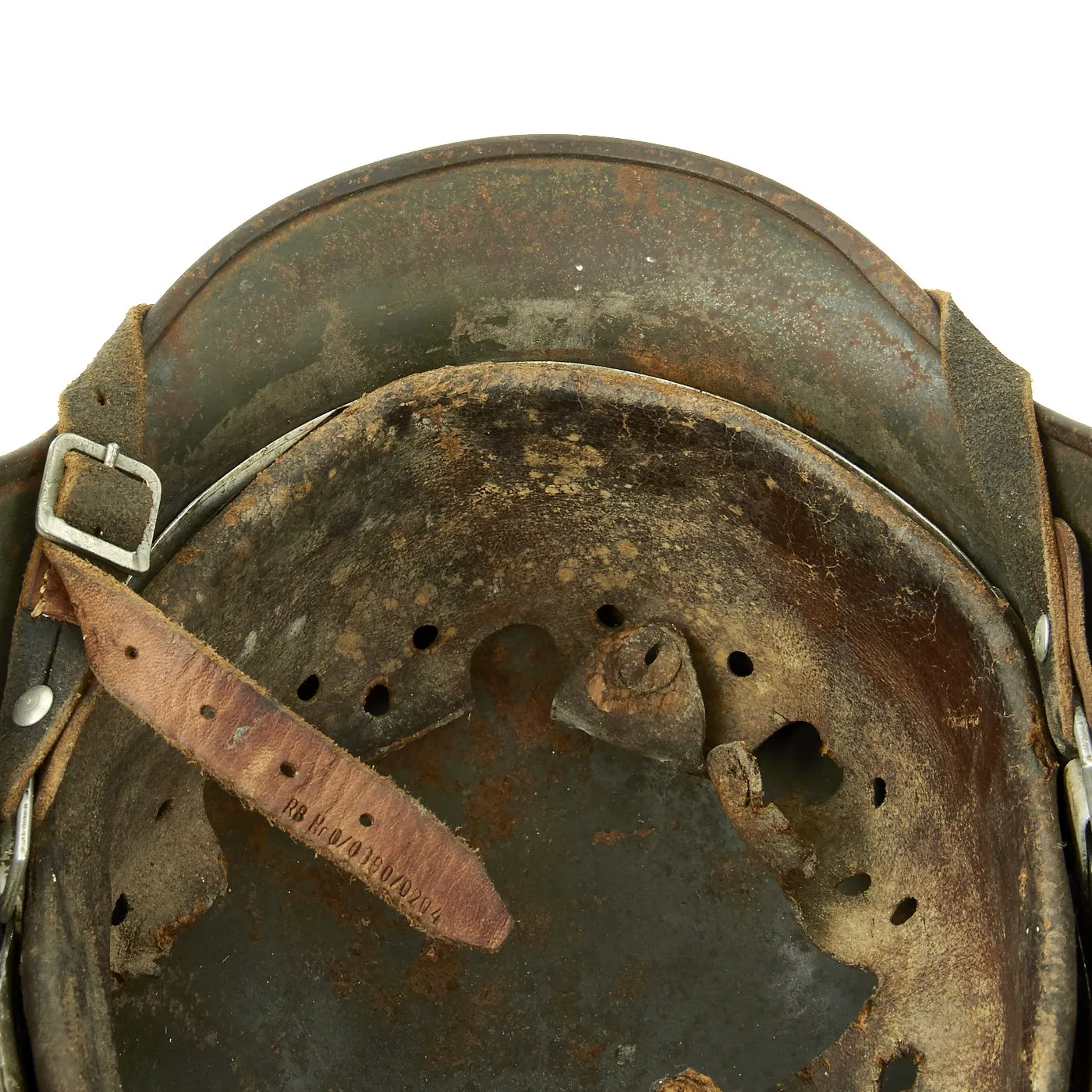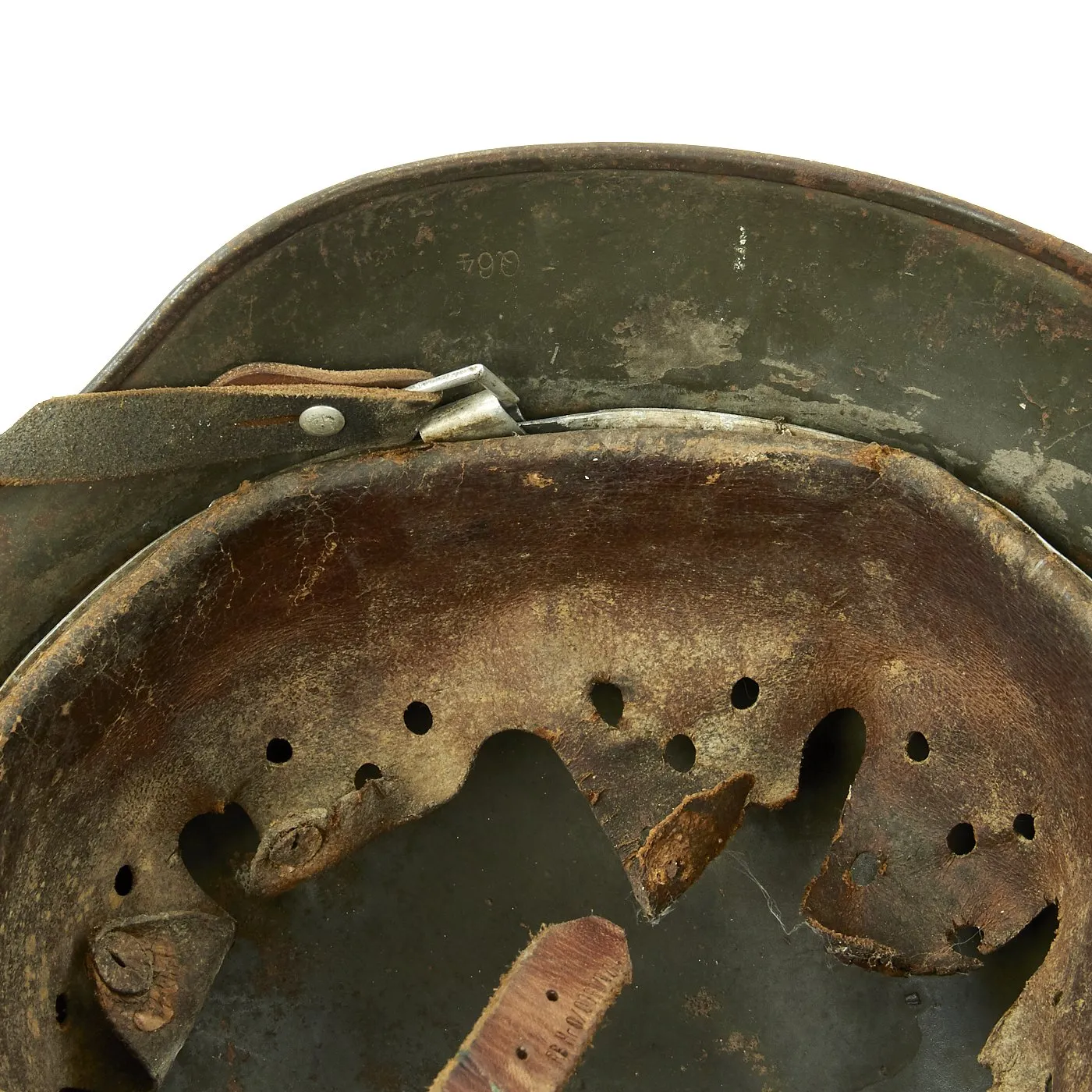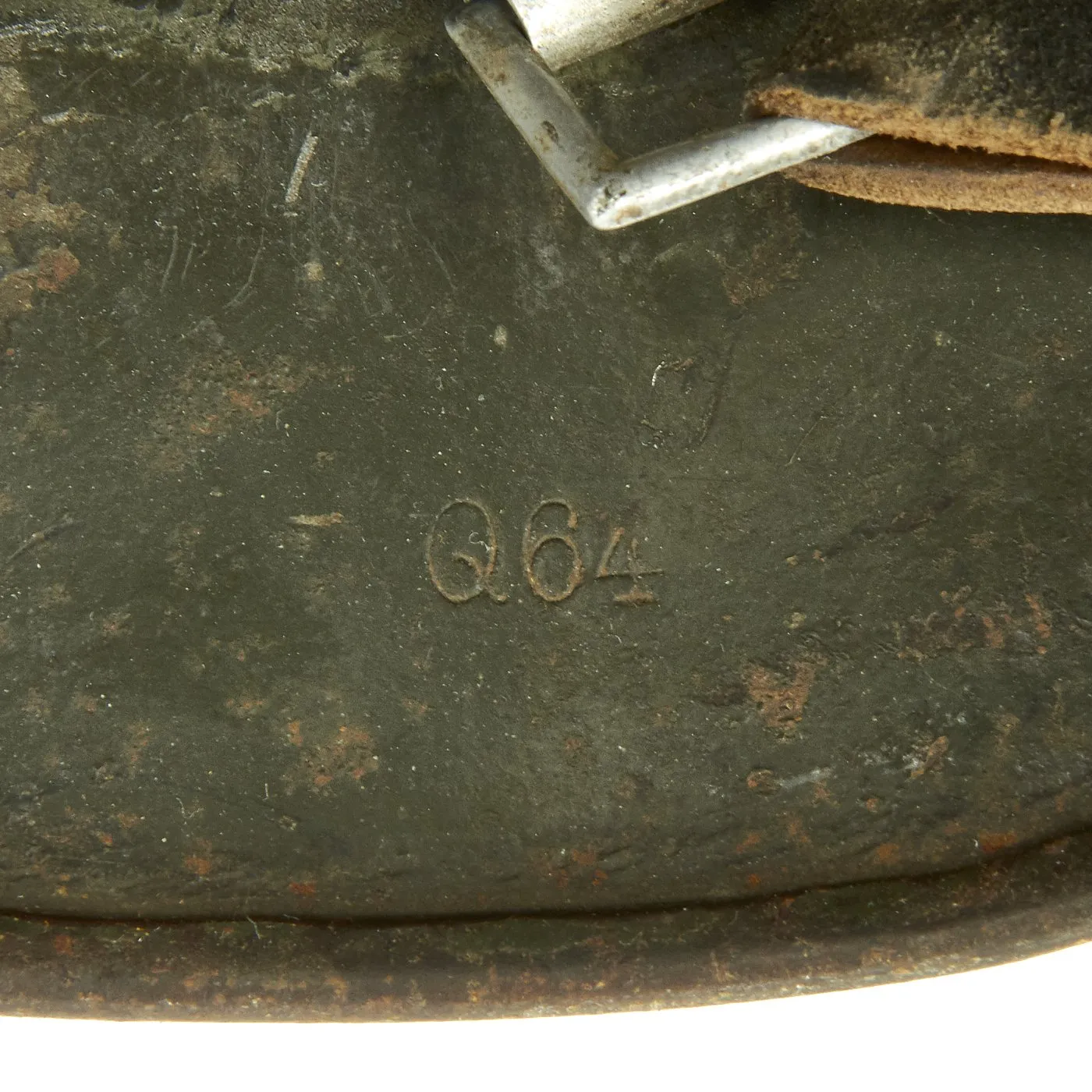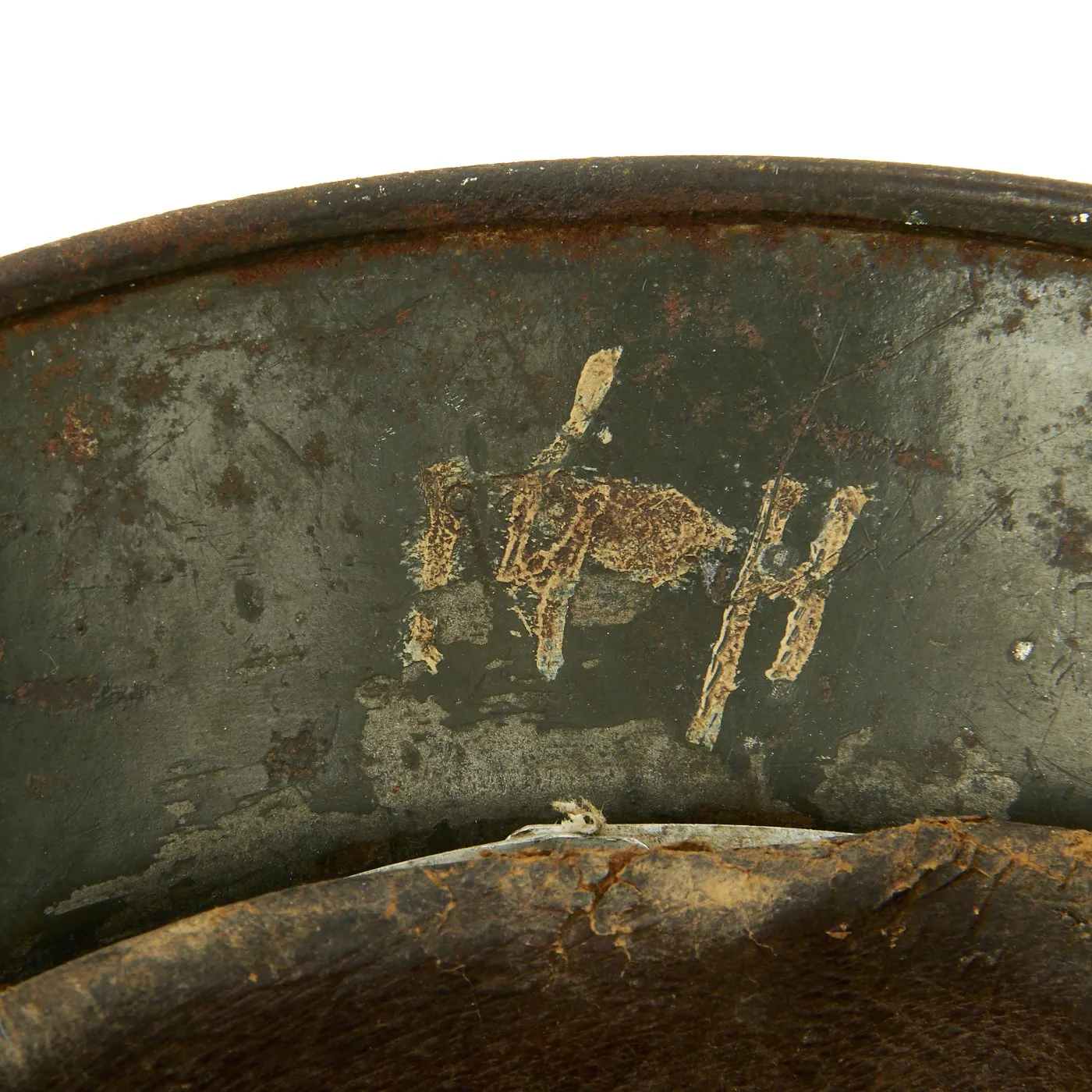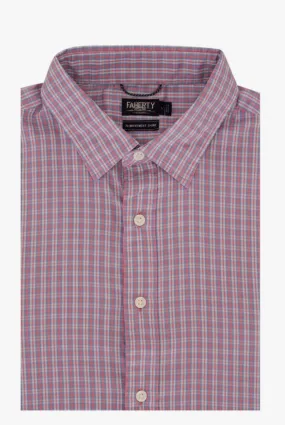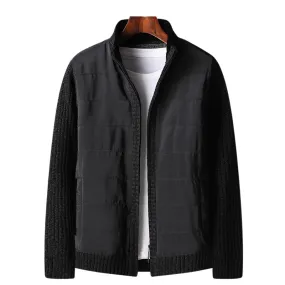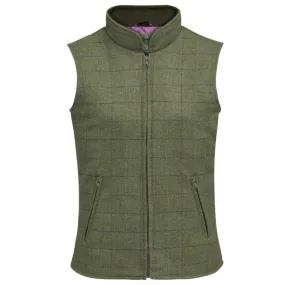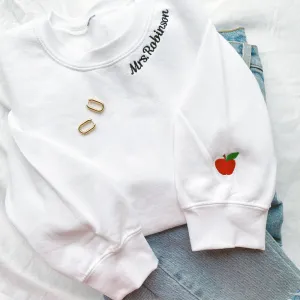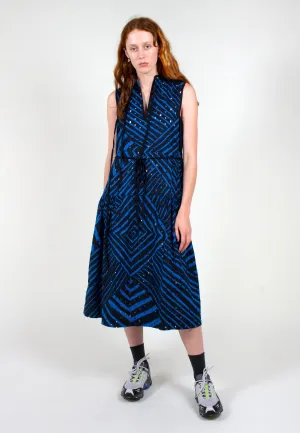Original Item: Only One Available. This is a very nice all original example of a German WWII M35 helmet, issued to the Heer (Army). This stamped sheet steel construction helmet retains much of its original paint but does show wear and use. It is painted in a very nice Textured Feldgrau (field gray) paint, which is retained at around 60-70%. Textured paint is much harder to find on these helmets, and we usually see it only on very early issue helmets. The left side of the helmet features a Heer eagle decal, which is retained about 80%, with some age toning and flaking of the surface. The right side of the helmet features a national colors decal, which did a bit better and is retained about 95%, with just a bit of wear, and a lovely aged look.
All three liner retaining pins are intact, with exterior paint retained well on two of the three. The interior of the helmet still has the original M31 leather liner, however it has definitely seem significant use, and is deteriorated. Four of the Eight fingers are missing, and the remaining ones are in delicate condition. This definitely has the look of a liner that went through a war. The early issue aluminum liner band is marked on the left outer side with 64 nA / 57, indicating that the liner is a size 57, intended for a 64 shell. There is also a manufacturer mark on the other side over the right ear, with a date of 1938 stamped inside.
The reverse, interior, neck guard apron is batch number stamped 326, and the interior, left side, apron has a stamped manufacturer's code and size, Q64. This indicates it was manufactured by Quist in Esslingen, Germany in size 64. Size 64 is a nice medium size that can accommodate liners from 56cm to 58cm or US 7 to 7 1/4. Size 64 shells are harder to find and are therefore more valuable to a collector.
Overall a very nice 100% genuine M35 Double Decal Heer Army helmet! M35 helmets of this quality are always the hardest to find on the market. This is an item that will only continue to appreciate in value over time.
The first "modern" steel helmets were introduced by the French army in early 1915 and were shortly followed by the British army later that year. With plans on the drawing board, experimental helmets in the field, ("Gaede" helmet), and some captured French and British helmets the German army began tests for their own steel helmet at the Kummersdorf Proving Grounds in November, and in the field in December 1915. An acceptable pattern was developed and approved and production began at Eisen-und Hüttenwerke, AG Thale/Harz, (Iron and Foundry Works), in the spring of 1916.
These first modern M16 helmets evolved into the M18 helmets by the end of WWI. The M16 and M18 helmets remained in usage through-out the Weimar Reichswehr, (National Defence Force, Circa 1919-1933), era and on into the early years of the Third Reich until the development of the smaller, lighter M35 style helmet in June 1935.
In 1934 tests began on an improved Stahlhelm, whose design was a development of World War I models. The Eisenhüttenwerke company of Thale carried out prototype design and testing, with Dr. Friedrich Schwerd once again taking a hand.
The new helmet was pressed from sheets of molybdenum steel in several stages. The size of the flared visor and skirt was reduced, and the large projecting lugs for the obsolete armor shield were eliminated. The ventilator holes were retained, but were set in smaller hollow rivets mounted to the helmet's shell. The edges of the shell were rolled over, creating a smooth edge along the helmet. Finally, a completely new leather suspension, or liner, was incorporated that greatly improved the helmet's safety, adjustability, and comfort for each wearer. These improvements made the new M1935 helmet lighter, more compact, and more comfortable to wear than the previous designs.
The Army's Supreme Command officially accepted the new helmet on June 25, 1935 and it was intended to replace all other helmets in service.
More than 1 million M1935 helmets were manufactured in the first two years after its introduction, and millions more were produced until 1940 when the basic design and production methods were changed.




